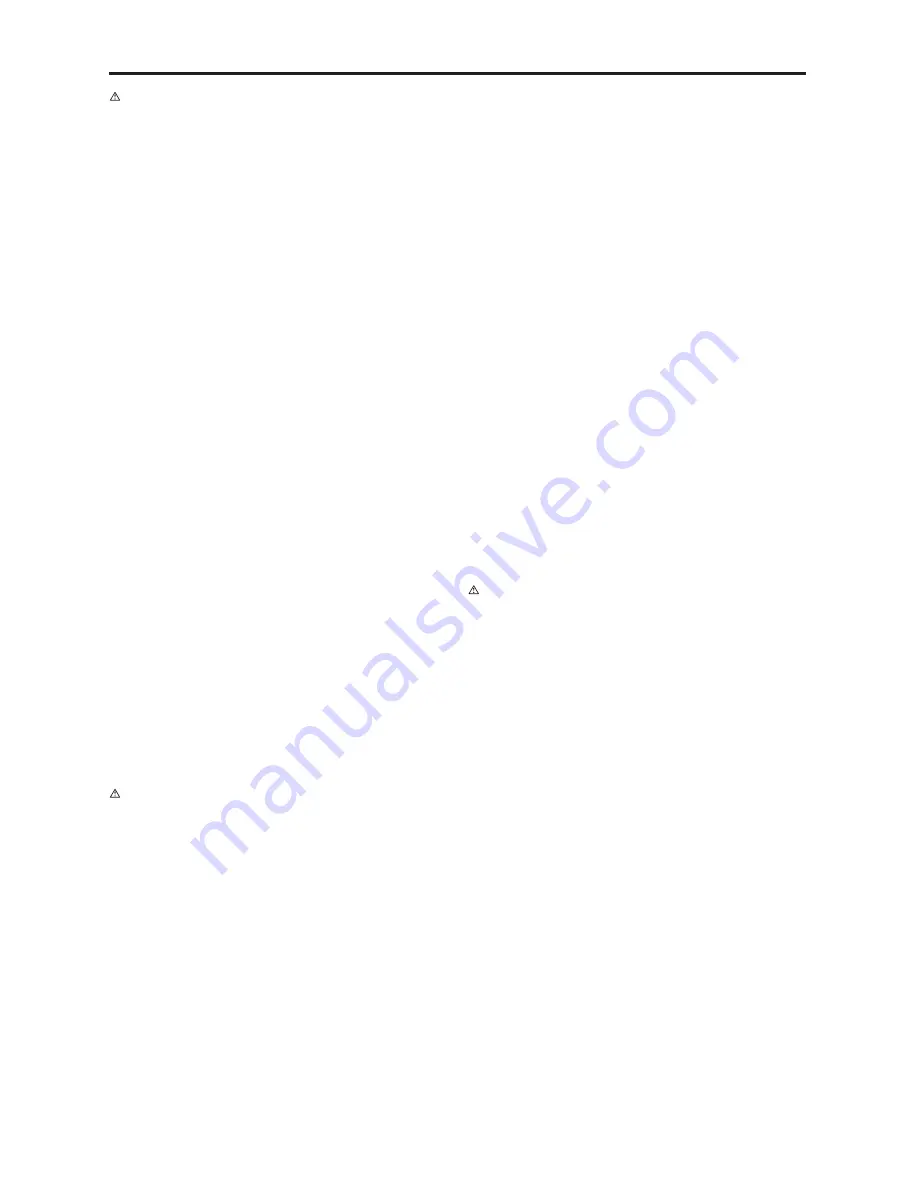
ENGLISH • 33
Warning! Battery chargers may get hot during
operation. Do not set charger on flammable materials like
carpeting, upholstery, paper, cardboard, etc. Charger may
damage leather, plastic and rubber.
Battery preparation
f
If it is necessary to remove battery from vehicle to
charge it, always remove grounded terminal from
battery first. Make sure all accessories in the vehicle
are
OFF in order to prevent sparks.
f
Be sure that the area around the battery is well
ventilated while being charged.
f
Clean the battery terminals. Be careful to keep corrosion
or battery acid from getting in or around your eyes.
f
For batteries with removable vent caps, if required,
add distilled water to each cell until the battery
fluid reaches the level specified by the battery
manufacturer. Do not overfill. For batteries without
removable vent caps, carefully follow the
manufacturer’s charging instructions.
f
Study all of the battery manufacturer’s specific
precautions and recommendations for charging and
for recommended rates of charge.
f
Make sure that you have a 12V lead-acid battery.
Determine voltage of battery by referring to the
vehicle owner’s manual. If the charger has an adjustable
charge rate, charge battery at the lowest rate first.
Charging a battery installed in vehicle
Note: A marine battery installed in a boat must be
removed and charged on shore. To charge it on board
requires equipment specially designed for marine use.
f
Connect and disconnect the DC output clamps only
after removing the AC plug from the electrical outlet.
f
Never allow the DC output clamps to touch each
other. This may cause a spark.
Warning! Follow these steps when battery is
installed in vehicle. A spark near battery may cause a
battery explosion.
To reduce the risk of a spark near battery:
1. Position AC and DC cords to reduce the risk of
damage by hood, door, or moving engine part.
2. Stay clear of fan blades, belts, pulleys, and other
parts than can cause injury to persons.
3. Check polarity of battery posts. A Positive (POS, P, +)
battery post usually has a larger diameter than a
Negative (NEG, N, -) post.
4. Determine which battery post is grounded (connected)
to the chassis. It is normally the negative post.
5. Connecting to a negative-grounded system:
Connect the Positive (red) clip from a battery charger
to a Positive (POS, P, +) ungrounded post of battery.
Connect the Negative (black) clip to vehicle chassis
or engine block away from battery. Do not connect
clip to carburetor, fuel lines, or sheet-metal body
parts. Connect to a heavy gauge metal part of the
frame or engine block.
6. Connecting to a positive-grounded system:
Connect the Negative (black) clip from battery
charger to Negative (NEG, N, -) ungrounded post
of battery. Connect the Positive (red) clip to vehicle
chassis or engine block away from battery. Do not
connect clip to carburetor, fuel lines, or sheet-metal
body parts. Connect to a heavy gauge metal part of
the frame or engine block.
7. Connect charger AC supply cord to electric outlet.
8. Charge battery as outlined in “Operation
instructions” section.
9. When disconnecting charger, disconnect AC cord,
remove clip from vehicle chassis, and then remove
clip from battery terminal.
Charging a battery removed from vehcile
f
Connect and disconnect the DC output clamps only
after removing the AC plug from the electrical outlet.
f
Never allow the DC output clamps to touch each
other. This may cause a spark.
Warning! Follow these steps when battery is
removed from vehicle. A spark near battery may
cause a battery explosion.
To reduce the risk of a spark near battery:
1. Check polarity of battery posts. A Positive (POS, P, +)
battery post usually has a larger diameter than a
Negative (NEG, N, -) post.
2. Attach at least a 60cm 6-guage (AWG) insulated
battery cable to a Negative (NEG, N, -) battery post.
3. Connect the Positive (red) charger clip to the
Positive (POS, P, +) post of battery.
4. Position yourself and the free end of cable as far away
from battery as possible, then connect the Negative
(black) charger clip to the free end of cable.
5. Do not face battery when making final connection.
6. Connect charger AC supply cord to electric outlet.
7. Charge battery as outlined in “Operating
instructions” section.
8. When disconnecting chargers, always do so in reverse
sequence of connecting procedure and break first connection
while standing as far away from battery as practical.
USE
Using this battery charger is extremely simple. The
built-in microprocessor was designed to seamlessly work
with all types of 12V lead-acid batteries so you don’t
need to select whether your battery is conventional, low
maintenance, maintenance-free, deep cycle, gel cell or AGM.






































